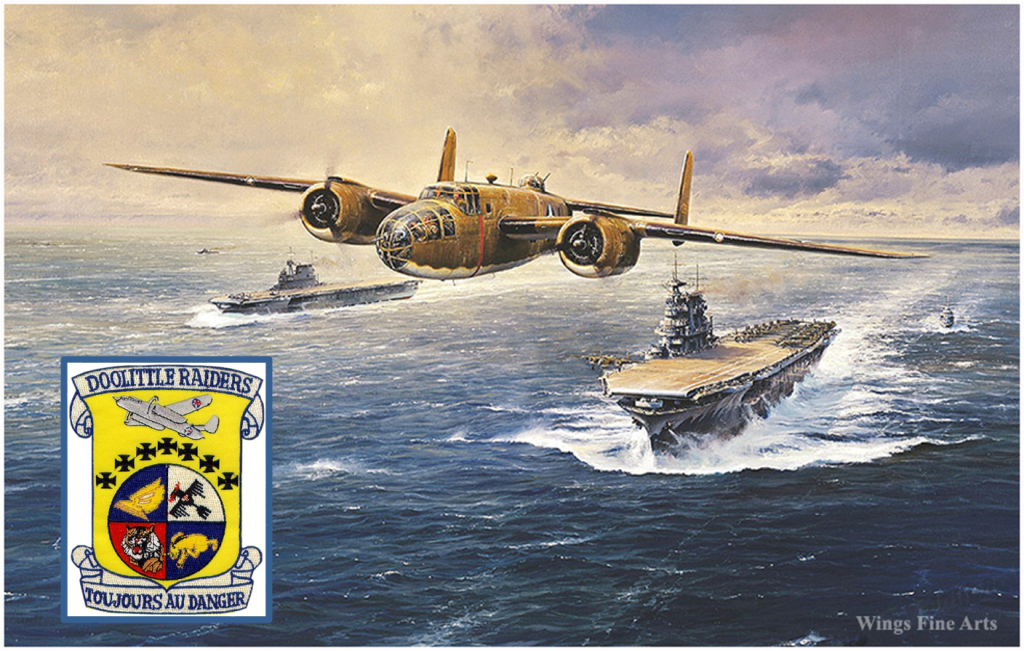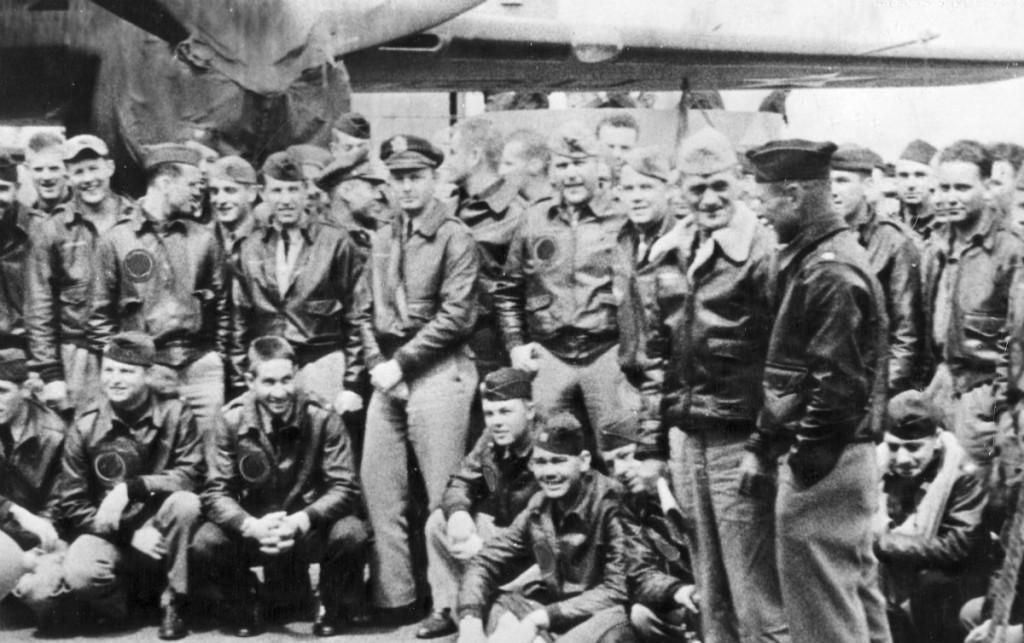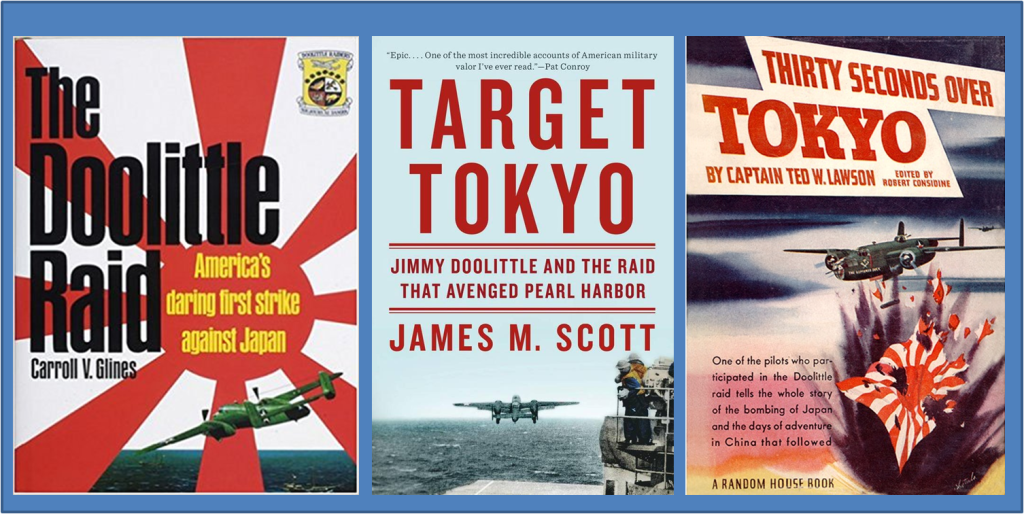Blown Slick Series #13 Part 2
War, Remembrance, Honor – The Doolittle Raiders
18 April, 1942
Spotted by a Japanese ship two days before they intended to launch 400-450 miles off the coast of Japan, Admiral Halsey, Hornet commanding officer Captain Marc Mitscher, and LtCol. Jimmy Doolittle determined the necessity to launch immediately – probably 600 plus miles out and meaning the raiders could most probably not reach the Chinese mainland.
The Doolittle Raid, also known as the Tokyo Raid, on Saturday, April 18, 1942, was planned and led by Lieutenant Colonel James “Jimmy” Doolittle as the first air operation to strike the Japanese Home Islands including the Japanese capital Tokyo.
Specifics
- Sixteen B-25B Mitchell medium bombers were launched without fighter escort from the aircraft carrier USS Hornet (CV-8) deep in the Western Pacific Ocean, each with a crew of five men.
- The flight deck of USS Hornet (CV-8) was 814 by 86 feet. (Wingspan of the Mitchel Bomber was 68 ft.) She was designed to host a Carrier Air Group of 18 fighters, 18 bombers, 37 scout planes, 18 torpedo bombers, and 6 utility aircraft.
- The B-25B carried 4 bombs totaling 2000 pounds. Some were incendiary bomb-lets
- In comparison note that an A-7 on an Alpha Strike into North Vietnam routinely carried 6 1000 lb bombs and A-6E Intruders carried multiple ejector racks holding up to 6 Mk 82 500 lb bombs each on 5 stations.
- The originalplan called for them to launch at 400-450 NM and bomb military targets in Japan, and to continue westward to land in China.
- The weather was bad with the flight deck pitching significantly during the launch. Launches were timed as best as possible so that the a/c lifted off as the bow was coming up. In several cases the up swing pushed the bomber nose up close to a stall. Capt. Mitscher considered the whole evolution fairly ugly but all 16 made it safely to Japan.
- Navigation assistance was unavailable. Fifteen aircraft reached China. Most if not all a/c missed their planned coast in point by significant margin. Flying in at wave top altitude they had little visibility of landmarks. They were surprised with how similar all the villages, suburbs, looked making finding their planned targets extremely difficult. In many cases when they found a structure that looked like a manufacturing concern, then popped up to 1500-2000 ft and dropped their ordnance. Some did find their planned targets like a naval facility. In some cases they dropped their four bombs individually and made multiple runs.
- No a/c was lost over Japan, but all but one crashed in China or just short of the beach, while the 16th landed at Vladivostok in the Soviet Union.
- All but three of the 80 crew members initially survived the mission. Eight airmen were captured by the Japanese Army in China; three of those were later executed. The B-25 that landed in the Soviet Union was confiscated and its crew interned for more than a year. Fourteen complete crews, except for one crewman who was killed in action, returned either to the United States or to American forces. All eighty aircrew were awarded with medals from China and from the Unites States, the Distinguished Flying Cross.
Doolitte and the Raiders with USS Hornet Commanding Officer Marc Mitscher
The raid caused negligible material damage to Japan, but it achieved its goal of raising American morale and casting doubt in Japan on the ability of its military leaders to defend their home islands. It also contributed to Admiral Isoroku Yamamoto’s decision to attack Midway Island in the Central Pacific. Prior to Doolittle’s Raid, the senior Japanese Army officers had strongly opposed the attack on Midway believing it would divide Army resources and require too long a logistics trail. After the attack they felt they could ill afford to be seen as non-responsive and were thus compelled to support Yamamoto’s plan for the Midway assault —the attack that cost them four carriers and turned into a decisive strategic defeat in the Battle of Midway. Doolittle, who initially believed that the loss of all his aircraft would lead to his court-martial, received the Medal of Honor and was promoted two ranks to brigadier general.
Doolittle’s Raid demonstrated that Japan itself was vulnerable to American air attack, served as retaliation for the Japanese attack on Pearl Harbor, and provided an important boost to American morale. Probably of more importance it was leverage to go on the offensive, first stopping the Japanese move towards Australia in the Coral Sea, second going on the offense against Yamamoto’s four carriers at Midway, and finally attacking and holding Guadalcanal. See Part 3 for beginning discussions of the carrier battles of 1942.







